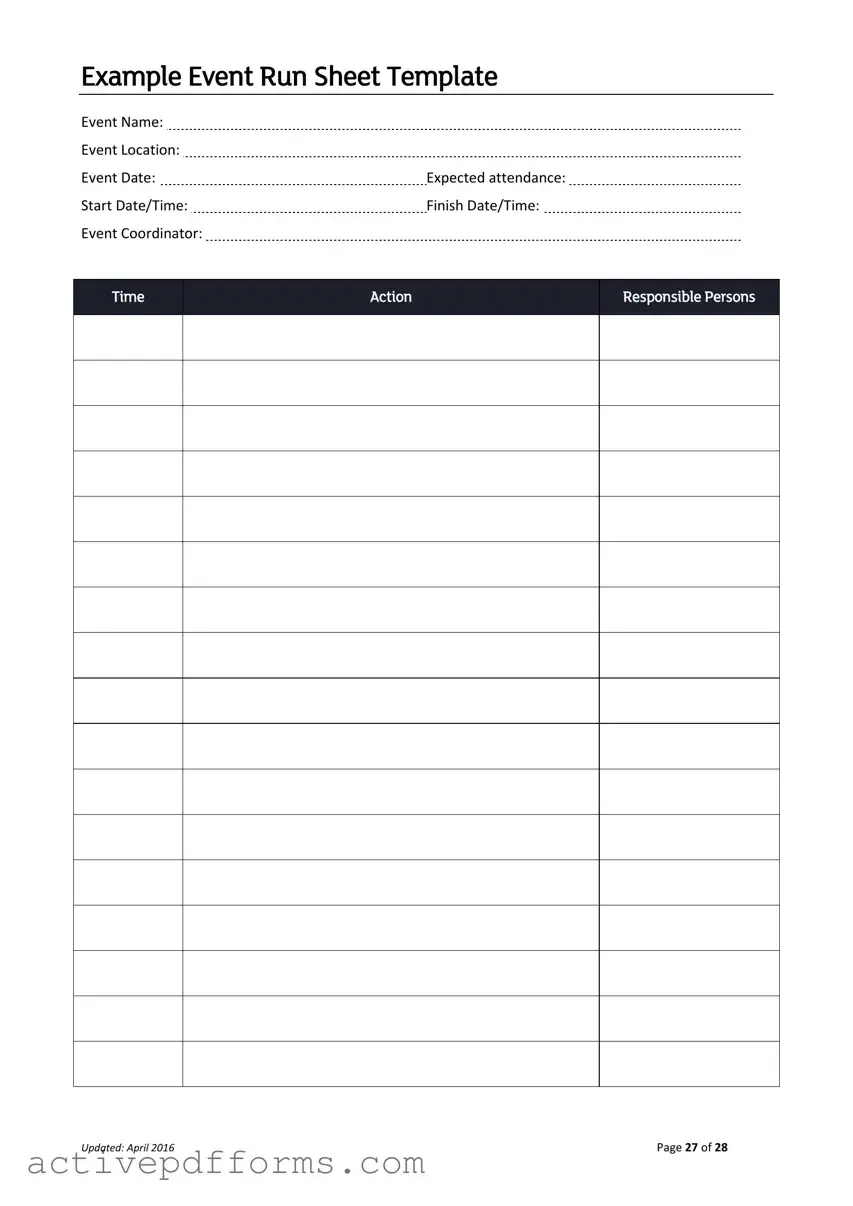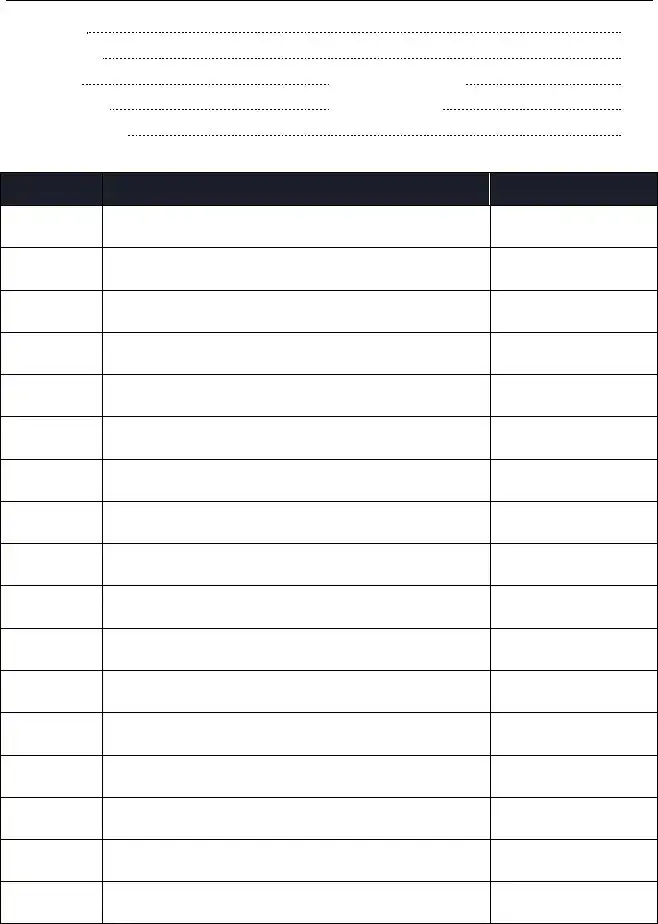Free Running Sheet PDF Template
The Running Sheet form serves as a comprehensive outline that details the sequence of activities, along with the designated responsibilities, slated for an event's execution. Developed to ensure seamless organization, it denotes crucial information such as the event name, location, date, expected attendance, and timelines. The inclusion of responsible individuals for each action further enhances coordination among the event's organizers.
Edit Running Sheet Now

